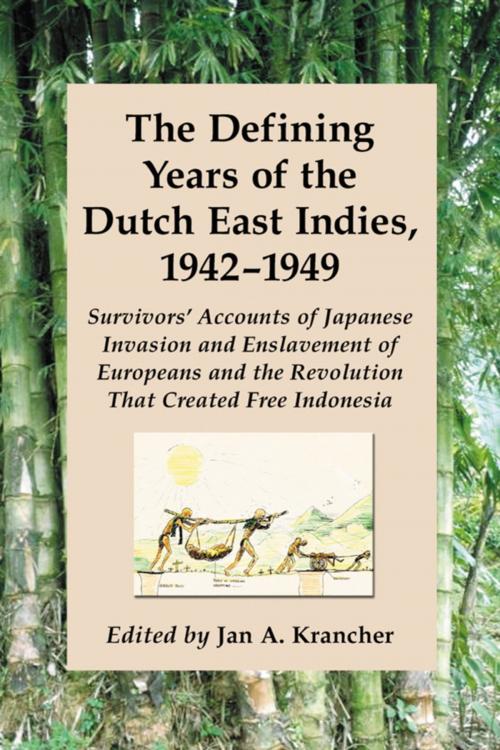The Defining Years of the Dutch East Indies, 1942-1949
Survivors' Accounts of Japanese Invasion and Enslavement of Europeans and the Revolution That Created Free Indonesia
Nonfiction, Social & Cultural Studies, Social Science, Cultural Studies, Ethnic Studies, History, World History, Military, World War II| Author: | ISBN: | 9780786481064 | |
| Publisher: | McFarland & Company, Inc., Publishers | Publication: | June 28, 2010 |
| Imprint: | Language: | English |
| Author: | |
| ISBN: | 9780786481064 |
| Publisher: | McFarland & Company, Inc., Publishers |
| Publication: | June 28, 2010 |
| Imprint: | |
| Language: | English |
Following their invasion of Java on March 1, 1942, the Japanese began a process of Japanization of the archipelago, banning every remnant of Dutch rule. Over the next three years, more than 100,000 Dutch citizens were shipped to Japanese internment camps and more than four million romushas, forced Indonesian laborers, were enlisted in the Japanese war effort. The Japanese occupation stimulated the development of Indonesian independence movements. Headed by Sukarno, a longtime admirer of Japan, nationalist forces declared their independence on August 17, 1945. For Dutch citizens, Dutch-Indonesians or “Indos,” and pro-Dutch Indonesians, Sukarno’s declaration marked the beginning of a new wave of terror. These powerful and often poignant stories from survivors of the Japanese occupation and subsequent turmoil surrounding Indonesian independence provide one with a vivid portrait of the hardships faced during the period.
Following their invasion of Java on March 1, 1942, the Japanese began a process of Japanization of the archipelago, banning every remnant of Dutch rule. Over the next three years, more than 100,000 Dutch citizens were shipped to Japanese internment camps and more than four million romushas, forced Indonesian laborers, were enlisted in the Japanese war effort. The Japanese occupation stimulated the development of Indonesian independence movements. Headed by Sukarno, a longtime admirer of Japan, nationalist forces declared their independence on August 17, 1945. For Dutch citizens, Dutch-Indonesians or “Indos,” and pro-Dutch Indonesians, Sukarno’s declaration marked the beginning of a new wave of terror. These powerful and often poignant stories from survivors of the Japanese occupation and subsequent turmoil surrounding Indonesian independence provide one with a vivid portrait of the hardships faced during the period.















